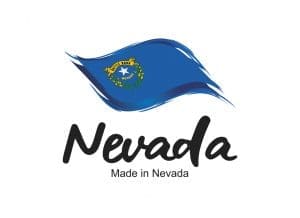First time home buyers in Nevada have many significant opportunities with down-payment assistance, home buying grants and affordable mortgage rates in 2026. As Nevada’s housing market enters a phase of cautious optimism in 2026 and 2027, prospective new home buyers may find this year to be a strategic moment to make their move. With house prices stabilizing and inventory levels rising, the Silver State is offering more breathing room for buyers who’ve been sidelined by past market volatility. The RefiGuide can help match Nevada first time buyers with trusted banks and mortgage lenders that offer competitive home loans and house buying grants.
Is 2026 a Good Time for Nevada First Time Home Buyers?

Nevada’s median home price sits around $455,000, reflecting a modest 5% year-over-year increase.
Inventory has surged by 22.5%, and homes are spending longer on the market—averaging 64 days before going under contract.
These trends suggest a shift toward a more balanced market, giving buyers greater negotiating power. However, Nevada mortgage rates remain elevated at 6.97%, which could impact affordability.
2026 Nevada First‑Time Home Buyer Programs
A. Home Is Possible for First‑Time Homebuyers (Nevada Housing Division)
This flagship program offers eligible first‑time buyers up to 4 – 5 % of the total mortgage loan value in interest‑free, no‑payment assistance (a second mortgage forgiven typically after 3–5 years)
Eligibility highlights:
-
Must not have owned a primary residence in the past 3 years
-
Minimum credit score: ~640 (680 for manufactured homes)
-
Debt-to-income ratio: up to ~50%
-
Subject to county-by-county purchase‑price and income limits
Link: https://www.homeispossiblenv.org/
B. Nevada Rural Housing Authority – Launchpad / Home at Last Programs
Operated by Nevada Rural Housing, these serve rural or small‑town Nevada, and provide up to 5% down-payment assistance via a no‑interest, no‑payment second mortgage
No separate application needed; it’s integrated with the primary mortgage process. Available to first‑time and repeat buyers in rural areas.
Link: https://nvrural.org/programs/homeownership/down-payment-assistance/
C. Workforce Initiative Subsidy for Homeownership (WISH) Grant
Through Greater Nevada Mortgage in partnership with the Federal Home Loan Bank of San Francisco, low‑ to moderate‑income borrowers (generally ≤ 80 % of HUD Area Median Income) can match their savings at a 4:1 rate, up to around $30,800. That can be used toward down payment or closing costs.
Applicants must join the Greater Nevada Credit Union and complete homebuyer counseling.
D. Middle‑Income Down Payment Assistance Grant (FHLB Program via Greater Nevada Mortgage)
Offers up to $50,000 grant toward down payment and closing costs for qualified middle‑income first‑time buyers (income ~80 – 140 % of HUD AMI), requiring at least $10,000 personal contribution, matched 5:1.
As of early 2025, the program’s 2025 funding is fully committed, though it may open again later in the year.
E. Mortgage Credit Certificate (MCC) Program (via Nevada Rural Housing)
This tax credit program allows eligible first‑time buyers in rural Nevada to receive a federal income tax credit worth a portion of their annual mortgage interest, effectively lowering monthly housing costs. Usually layered with Home At Last assistance.
Link & details: see Nevada Rural Housing homeownership page Nevada Rural Housing.
Program Comparison Table
| Program | Who It’s For | Assistance Type | Amount | Key Conditions |
|---|---|---|---|---|
| Home Is Possible (NHD) | First‑time in Nevada (≤ 3 years no ownership) | 0% interest 2nd mortgage forgiven | Up to 4–5% of loan | Min credit ~640, DTI ≤50%, income/price limits |
| Launchpad / Home at Last (NRHA) | First‑time or repeat in rural NV | No‑interest, no‑payment assistance | Up to 5% | Rural-only, program integrated with primary loan |
| WISH Grant | Low/moderate income (≤ 80% HUD AMI) | 4:1 matched grant | Up to ~$30,000 | Must join credit union, counseling, match savings |
| Middle‑Income Grant | Middle‑income (80–140% HUD AMI) | 5:1 matched grant | Up to $50,000 | $10K personal contribution, counseling, currently full |
| MCC Tax Credit | Rural first‑time buyers | Federal mortgage interest tax credit | Varies annually | Apply before closing, combine with Home At Last |
NV State & Local Incentives Overview
-
State‑wide incentives are centered on Nevada Housing Division’s Home Is Possible flagship program and NRHA for rural areas—as described above.
-
Local or municipal incentives (e.g., city‑level grants like in Las Vegas or Reno) were not clearly documented for first‑time homebuyers beyond the state-run offerings. Buyers are encouraged to check with county housing authorities or local city housing offices for any municipal pilot programs in 2025.
Case Study #1 – Home Is Possible in Action
Scenario:
-
Buyer: Alice, first‑time buyer, Las Vegas metro area
-
Home price: $400,000
-
Credit score: 680
-
Loan type: FHA through Nevada Housing Division Home Is Possible
Assistance received: 4% of loan = $16,000 applied toward down payment (second mortgage, 0% interest, deferred). Monthly mortgage rate 6% (slightly higher than standard 5%)
Cost comparison:
-
With HIP: ~$2,398/mo principal & interest
-
Without HIP: ~$2,147/mo P&I
-
Monthly difference: ~$251
Break‑even: At that difference, Alice recoups the $16,000 benefit in ~64 months (~5+ years). Since the HIP grant is forgiven at 3 years, if Alice stays in the home at least that long—and ideally refinances later at a lower rate—she comes out financially ahead.
Outcome: After 3 years, Alice’s second mortgage is forgiven. At year 4 she refinances to a lower rate (say 4%), dropping her monthly payment below what she’d pay on a conventional loan from the start. She ends up saving thousands over time and benefits from initial cash relief.
Case Study #2 – Middle‑Income Grant (via FHLB & Greater Nevada Mortgage)
Scenario (based on true reported usage by “Destiny White”):
-
Buyer: Destiny – first‑time homebuyer in Henderson (~Las Vegas metro)
-
Income: qualifies at ~middle‑income (80–140 % HUD AMI)
-
Contribution: saved or gifted $10,000 toward purchase
-
Grant: $50,000 FHLB-supported assistance applied at closing
Result:
Destiny had been unable to reach closing due to upfront cost barriers. But with the grant, she closed on her home and gained significant leverage toward building generational wealth and financial security. She reported the assistance was transformative and would not need repayment The Sun.
Note: As of early 2025, this program had exhausted funding, but it may reopen later in the year. Buyers should monitor Greater Nevada Mortgage and local housing partners or get on a waitlist if offered again.
Tips for Nevada First‑Time Homebuyers in 2025
-
Determine first‑time status: If you haven’t owned a primary residence in the past 3 years, you likely qualify. Special exemptions exist for veterans and buyers in designated areas
-
Get your credit score in shape: A score of 640 + qualifies; some programs (e.g. manufactured homes) require 680 +.
-
Complete HUD‑approved homebuyer education/counseling: Required for most grants (e.g. HIP, WISH, Middle‑Income).
-
Check county‑specific limits: Purchase price caps and income eligibility vary across Nevada’s counties—check Home Is Possible and NRHA websites for details.
-
Evaluate timing: If Middle‑Income Fund is closed for 2025, homebuyers may still qualify for HIP or NRHA programs.
-
Join credit union when needed: WISH requires membership in Greater Nevada Credit Union as part of the eligibility package.
For Nevada first‑time homebuyers in 2025, the Home Is Possible program is the premier state offering—delivering up to 5% of loan value in down‑payment assistance, deferred and forgiven. For rural buyers, NRHA offers equally strong support via Launchpad or Home At Last, with no interest or monthly payments. Low-income buyers seeking matched support should explore the WISH grant through Greater Nevada Mortgage; and while the Middle‑Income grant is currently unavailable, when available it offers rare $50K assistance that can be truly transformative.
Additional Nevada First Time Home Buyer Resources & Links
-
Nevada Housing Division – Home Is Possible: https://www.homeispossiblenv.org/
-
Nevada Rural Housing Authority – Launchpad / Home At Last: https://nvrural.org/programs/homeownership/down-payment-assistance/
-
Greater Nevada Mortgage – WISH & Middle‑Income Grants: https://greaternevadamortgage.com/down-payment-assistance-programs/
Nevada offers robust support for first‑time homebuyers in 2025—whether through state-backed down-payment assistance, rural housing options, or matched grant funding. Prospective buyers should research eligibility, ask lenders about layering programs (e.g. combining HIP with tax credits), plan for counseling, and act quickly if limited programs like the Middle‑Income Grant re‑open. With the right strategy, homeownership in Nevada can be more attainable than many assume.
Nevada First Time Home Buyers FAQs
What are the qualifications for first-time homebuyer grants in Nevada?
To qualify for first-time homebuyer grants in Nevada, you typically must not have owned a home in the past three years, live in a Nevada primary residence, meet HUD-defined first-time buyer status, complete homebuyer counseling, and meet low-to-moderate HUD area median income limits (often between 80 – 140% AMI)
What credit scores do I need to qualify for down payment assistance in Nevada?
Most Nevada down payment assistance programs require a minimum credit score of 640, though certain programs may raise that to 660 if your debt-to-income ratio exceeds ~45% . Completing a homebuyer education course and keeping your DTI under 50% boost eligibility as well.
What is Nevada’s unemployment rate?
Nevada’s annual average unemployment rate for the period 2019–2023 stands at approximately 6.8%, notably above the U.S. average, (~5.2%) In June 2024, the rate was reported at 5.2%, showing a modest decline from prior years. Younger workers (ages 16–24) tend to face even higher unemployment rates, averaging around 13.2% during the same multi-year period
What is the average age of a first-time homebuyer in Nevada?
While state-specific age data for Nevada isn’t published, nationally the median age of first‑time buyers in the U.S. is 38, and that rate has been rising due to affordability challenges and student debt burdens. Given Nevada’s elevated housing costs and comparable trends, we can infer the average age of first‑time buyers in Nevada closely matches or slightly exceeds that national median around 38 years old.
How many people rent vs. buy homes in Nevada?
Nevada’s homeownership rate is about 60.4%—lower than the national average of 65.2%—meaning approximately 39.6% of households rent their homes. These rates reflect ongoing affordability pressures and strong rental demand across the state.
